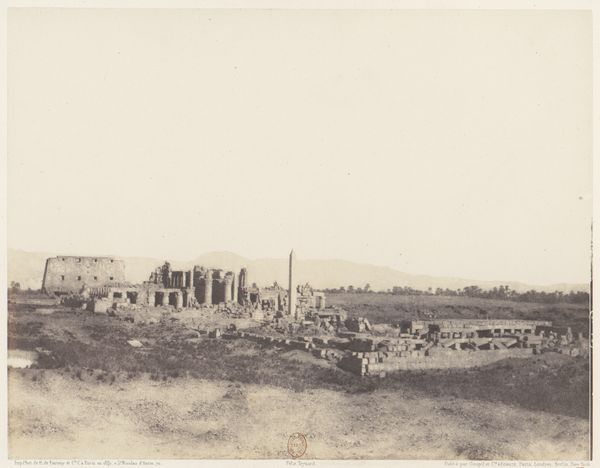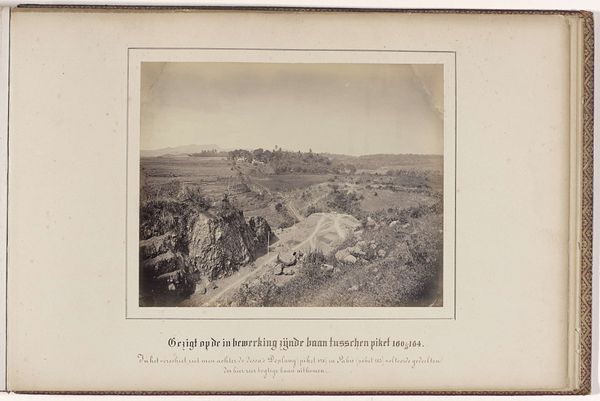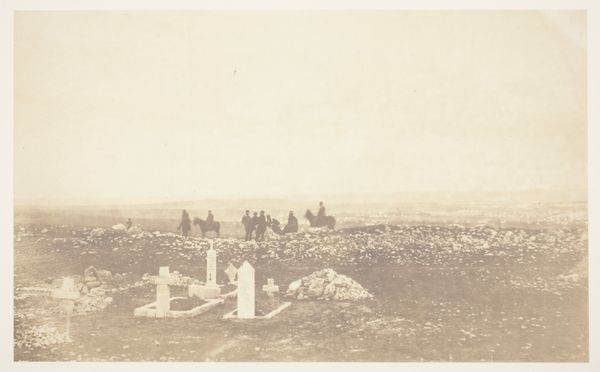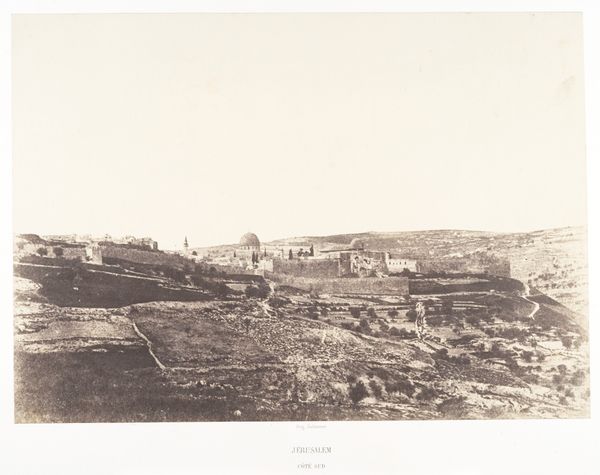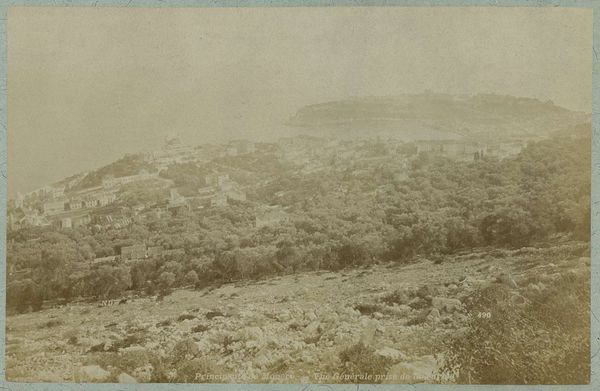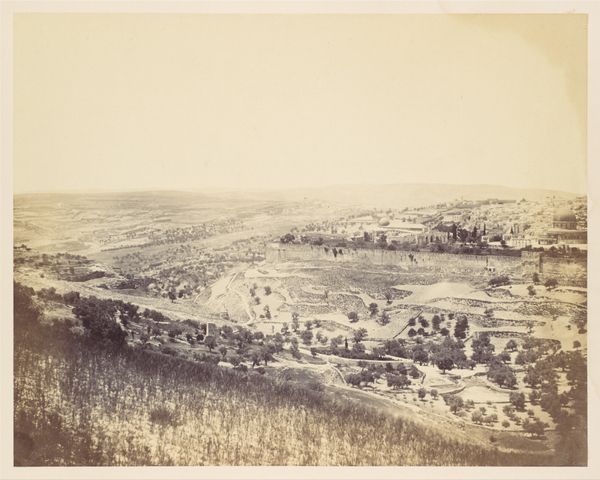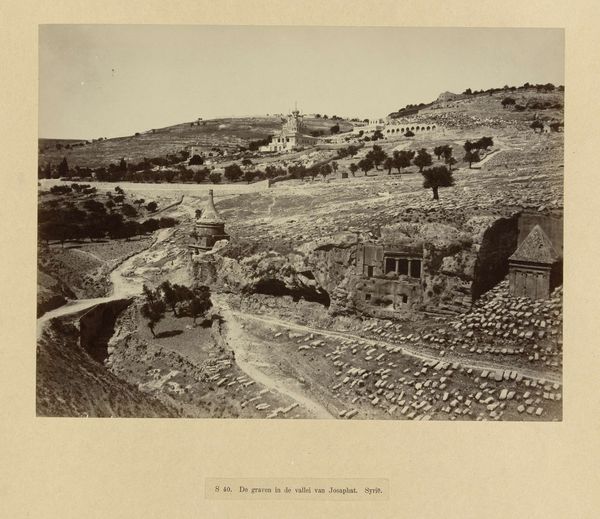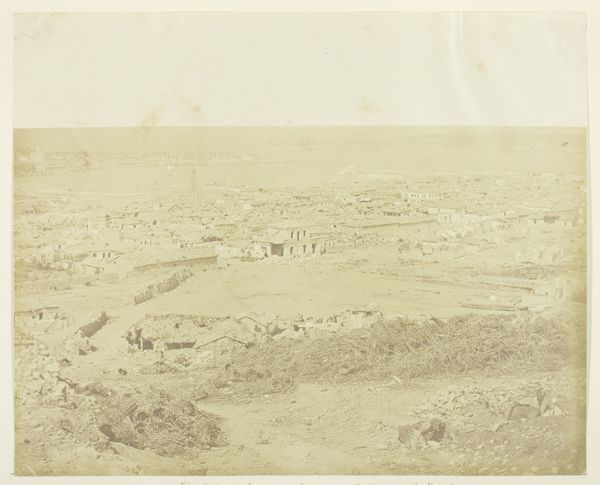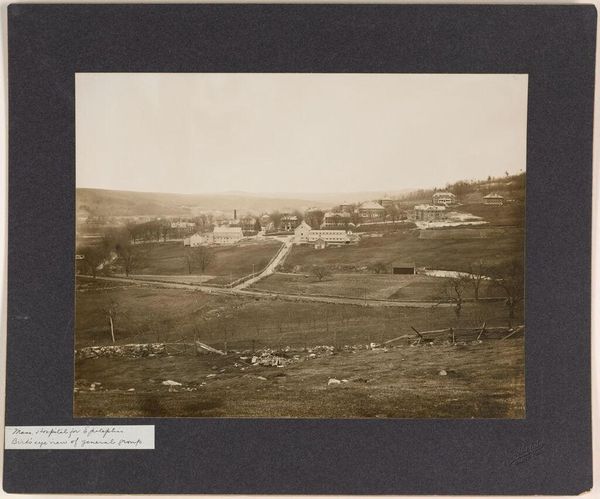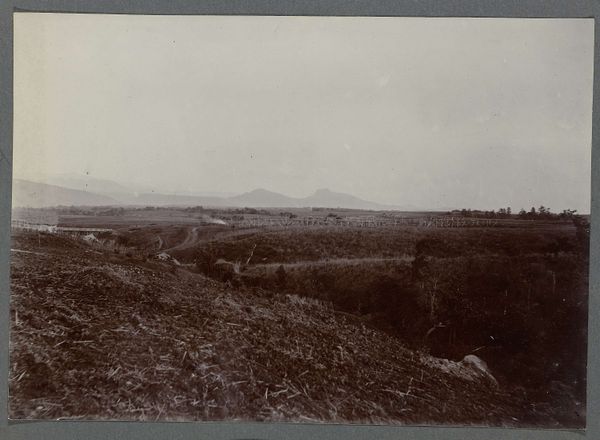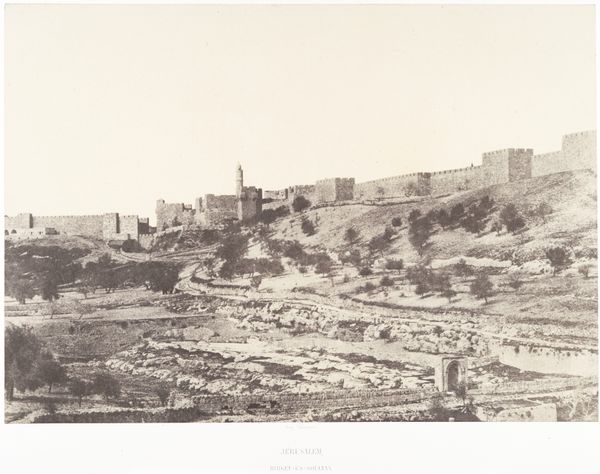
Gezicht op een ommuurde tuin en velden in Perzië, op de achtergrond een stad c. 1880 - 1895
0:00
0:00
photography
#
african-art
#
landscape
#
photography
#
orientalism
Dimensions: height 150 mm, width 218 mm
Copyright: Rijks Museum: Open Domain
Curator: Antoine Sevruguin gifts us this landscape, captured sometime between 1880 and 1895. Titled "View of a walled garden and fields in Persia, with a city in the background," it's a fascinating early photograph. Editor: It feels remarkably still, doesn't it? A quiet solemnity washes over me looking at this. Like witnessing a moment frozen in time, almost dreamlike, with the city faded into the horizon. Curator: Absolutely. Sevruguin was known for documenting Persian life and landscapes. This image embodies the orientalist aesthetic of the time. The photographer gives emphasis on what would be regarded at the time as exotic "Eastern" environments. It romanticizes its culture through carefully chosen framing devices that accentuate differences of time and place. Editor: Ah, but the very act of framing and photographing itself introduces a power dynamic, wouldn’t you say? It’s a gaze, and often a colonizing one. Are we seeing Persia or Sevruguin's constructed idea of it? The wall, the cultivated fields give hints of land ownership and agriculture practices, perhaps as seen from a removed, foreign point of view. Curator: That's a vital point. It brings attention to the very question of representation and authority. Consider how landscape functions as an expression of the power that is taking place. Editor: The softness of the photographic print actually works to soften these rigid constructs, almost obscuring, inviting speculation rather than documentation. Did you notice the stark contrast between the structured garden within the frame with the open, almost wild fields outside? Curator: The stark visual disjunction is difficult to ignore! Sevruguin presents us with layered spatial levels, each hinting at different types of access. We move our gaze in order to ponder on different concepts like security, but also privacy. What could each represent in society and family units during that time? Editor: Exactly, those kinds of questions open this otherwise serene photograph up to such a deeper inquiry. Curator: In the end, regardless of intention, Sevruguin hands down this scene. "View of a walled garden and fields in Persia..." can be enjoyed and questioned from multiple positions, and perspectives today. Editor: A frozen landscape—containing all the latent possibilities and contradictions of looking at the past—now unlocked for future audiences. What could we hope more?
Comments
No comments
Be the first to comment and join the conversation on the ultimate creative platform.
